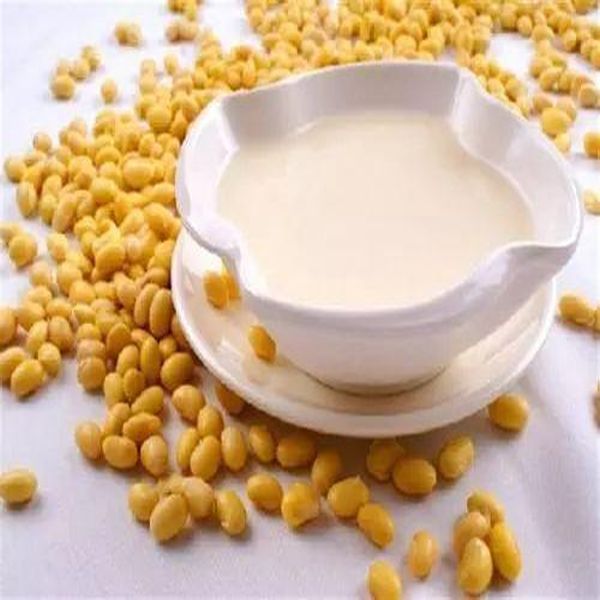Soy isoflavones are flavonoids, secondary metabolites formed in soybean growth and bioactive substances. Soy isoflavones are also known as phytoestrogens because they are derived from plants and have similar structures to estrogen. The estrogen of soy isoflavones affects hormone secretion, metabolic biological activity, protein synthesis, growth factor activity, and is a natural chemoprophylaxis for cancer.
Soy Isoflavone is a kind of phytochemical, a genus of plant flavonoids, mainly derived from legumes of legumes, soybean content is higher, 0.1%-0.5%.It mainly refers to the compounds with 3-benzopyrans as the parent nucleus. There are 12 kinds of soy isoflavones naturally existing in soybean, which can be divided into 3 types, namely Daidzingroups, Genistingroups and Glycitingroups.Each type exists in four forms: free type, glucoside type, acetyl glucoside type and malonyl glucoside type.Free Aglycon accounted for 2%-3% of the total, including Genistein, Daidzein and Glycitein.Glycosides of the conjugated type accounted for 97-98% of the total amount, and mainly existed in the forms of Genistein and Daidzin, malonyl Genistein (6′ -o-ma-1onylgenistin) and malonyldaid-zin (6′ -o-malonyldaid-zin), accounting for about 95% of the total amount.The planting environment, processing methods and genetic factors had certain effects on the content and composition of soy isoflavones, which were manifested in the differences in the total amount of isoflavones and the proportion of each component in different soybean varieties.
Pure soy isoflavones are colorless crystalline substances. Genistein is colorless lamellar crystal and daidzein is colorless acicular crystal.Industrial soy isoflavone products are white or light yellow powder.Soy isoflavones are related to the bitterness and astringency of soybean products, and the free aglycones (especially the stained xyloflavone and soybean aglycones) have more unpleasant flavor than the glycoside compounds.The melting point of the synthesized daidzein was 320-321℃ (decomposition), the melting point of the synthesized genistein was 295-296℃, and the melting point of the synthesized and extracted daidzein from soybean germ was 337-339℃.
Epidemiological studies have found that long-term consumption of soy products can delay the incidence of atherosclerosis, reduce the total blood cholesterol concentration, and reduce the incidence of heart disease.The mechanisms of soy isoflavones in cardiovascular diseases are diversified, and the more mature mechanisms include antioxidant effect, receptor regulation, inhibition of vascular smooth muscle cell proliferation, and antithrombogenic effect.Soy isoflavones can inhibit tyrosine kinase and reduce tyrosine protein phosphorylation in platelets, resulting in decreased platelet activity, which leads to reduced deposition and aggregation in vascular walls, preventing systemic thrombosis related to atherosclerosis.Soy isoflavones significantly inhibited the increase of plasma triglyceride level caused by high-fat diet in rats, and had a significant antagonistic effect on the increase of peroxide level in vivo caused by high-fat diet.It is mainly manifested in reducing the level of free radicals in liver and myocardium, increasing the activity of liver superoxide dismutase (SOD) and glutathione peroxidase (gsh-px) in liver and myocardium, and reducing the content of total antioxidant products in serum, liver, myocardium and aorta.
In recent years, it has been found that soy isoflavones have a beneficial effect on renal function of patients with kidney disease.Many nephrotic diseases, such as nephrotic syndrome, can be complicated by hyperlipidemia. The most common explanation is that hypoalbuminemia stimulates an increase in the compensatory synthesis of lipophilic B in the liver, resulting in excessive LDL, which causes hyperlipidemia.The theory of nephrotoxicity, that increased blood lipids promote progressive glomerular disease, has been established for many years.Therefore, lowering blood lipids to protect kidney function is a very important part of the treatment of kidney disease, and soy isoflavones can lower blood lipids to protect kidney function.It has also been reported that soy isoflavones show the biological activity of diuretics in vitro, which can inhibit Na+K+ 2cl-transmembrane transport, ensure sufficient blood flow, have diuretic effect, and can relax renal vessels in the kidney in vitro.Therefore, soy isoflavones can prevent and treat kidney disease.
Post time: Apr-03-2020
